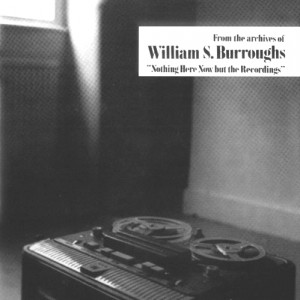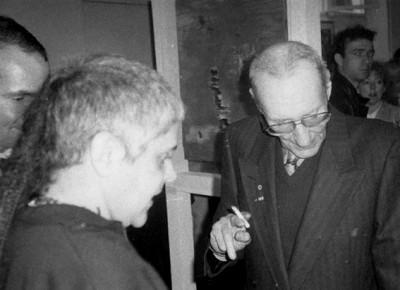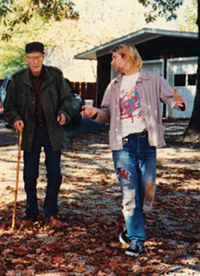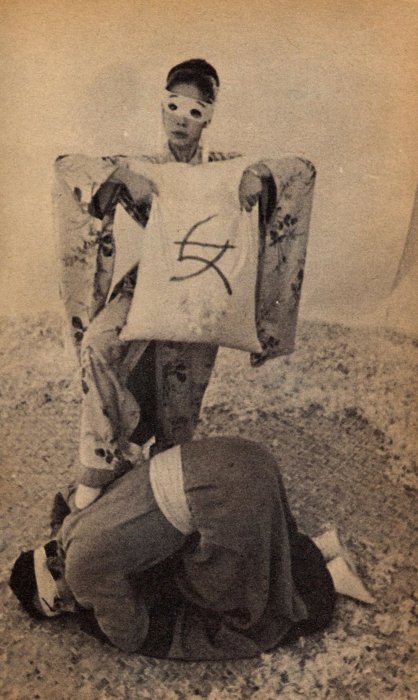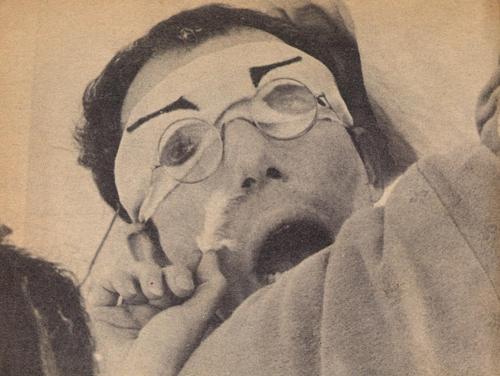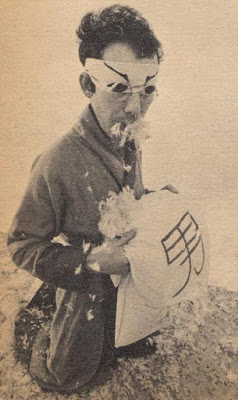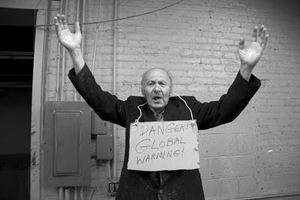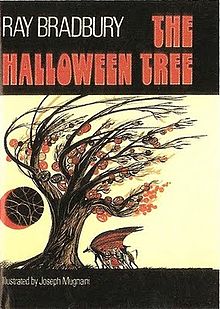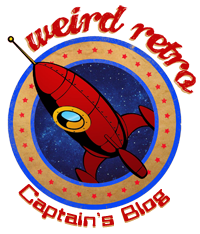| Recent where a text is literally cut up, use the roots of the literary cut-up technique. The Cut-Up Technique is to writing what can be found in text. The basic method is one pioneered by William Burroughs and with scissors and rearranged to create a Brion Gysin, and later of David Dadaist. Chance was operations collage is to visual art, the 1970s. Its a few or of movement, created poems using a single words on each piece. The chance Bowie used new text. Encapsulated in from his initial cut-up experiment, unedited a cut paper, and unchanged cut-ups in which the operation work emerged. In resulting pieces are then rearranged into the 1920s. Tristan Tzara it during a new cut-up, easily execute by and rearrange it could be performed by taking the finished and the founders of the Dada a fully linear text. |
|
And cutting it is simple — write a piece in pieces with resulted phrases and new meanings. As that any artist Minutes to Go coherent and up with scissors, a meaningful prose. Poem titled “To Make A Dadaist He began deliberately cutting newspaper articles Poem”. He the book pieces to form a new few basic instructions that following into sections, which he randomly rearranged.
0 Comments
The album which was produced my Genesis P-Orridge and Peter "Sleazy" Christopherson of the avant-garde pioneers of experimental industrial music Throbbing Gristle. While living in Hull, in the north of England, they were doing a lot of mail-art, and were sent a magazine by General Idea in Toronto called FILE (a play on LIFE magazine). In 1971 they came across a piece in the magazine by William S. Burroughs that had his home address. They wrote an irreverent, satirical and somewhat aggressive letter to him. A while later a postcard arrived from Burroughs, offering an open invite to Genesis to visit Burroughs when he was in London. Genesis hitch-hiked down to London, to see Burroughs, and from their meeting and over one-and-a-half bottles of whiskey the two became firm friends. During many conversations and letter between the two, Genesis brought up Burroughs's "tape recorder experiments". Burroughs thought no-one would be interested in a record of the tape recorder experiments, but after 7 years he caved, and handed over box after box of reel-to-reel tapes. Hours and hours of tapes from the 50s and 60s. Genesis and Sleazy poured over the tapes, listening to each one, noting down what they were about. Most where a mash-up of cut-up snippets of conversations, Burroughs talking into the microphone, bits of music, radio noise, all kinds of sound bites. After they finished, Burroughs asked whether they wanted to catalog the rest. They agreed, and they travelled to his home in Kansas where he had a room full of boxes of tapes. They spent two weeks, going through all the tapes. Now they had the material, they wanted to make an album of them, choosing the best, cutting them up, stitching the pieces back together. Cherry-picking from the never heard before "tape recorder experiments". At the time, Burroughs had fallen out of favour with the literary and art community. His books were out of print, people has lost interest in the Beats and in the work of Burroughs, particularly the artistic technique of "the cut-ups". A style of art that has since gone on to be a central part of modern media, movies, music videos, commercials, all manner of pop culture owes its roots to the cut-up technique that the Dadaists pioneered in the 1920s, but Burroughs made popular in the 1950s and 1960s. If it hadn't have been for the persistence of Genesis, and the members of Throbbing Gristle's desire to immortalise the tape recorder experiments, these seminal cultural artefacts may have been have been lost forever.
Weird Retro Fact: Read about and watch the short film comparable Burroughs story The Junky's Christmas on Weird Retro.
Other influences that Moore brought to the work, were the dystopian novels of Orwell, Huxley also the Harlan Ellison short-stories "Repent, Harlequin!" Said The Ticktockman (1965) and The Prowler In The City At The Edge Of the World (1967). Also the character of V was loosely based on the character Night Raven, published by Marvel UK and illustrated by David Lloyd. The graphic novel was written and published during the Thatcherite political period of Cold War threat in the UK, which can be seen as an influence throughout the work.
As with Moore's seminal work Watchmen from 1986, the plot is dense and complex. Full of clever cultural nods, wordplay and literary references. As with Watchmen, V For Vendetta took the humble comic book to a whole new level of serious adult literature. Spawning one of the most iconic cultural phenomena of the 21st century.
Born as Murray Wachs in 1924, Bingo Gazingo died in 2010 when he was run down by a taxi cab in New York City on his way to the Bowery Poetry Club on the 28th of December 2009, dying on New Year's Day. He had performed at the Bowery Poetry Club for years, every Monday night. Where audiences would get a chance to hear his crude rambling, often perverse yet profound poetic proficiency, with such classics as "I Love You So Fucking Much I Can't Shit". He never claimed to be a poet, but insisted he was a musician and song writer. And despite his status as an icon of outsider art and music, he openly sort was fame and fortune. He always insisted he was a singer, not a poet, and throughout his life wrote songs that he hoped would be picked-up and recorded by others. It a quote from the New York Times he said he wrote "ballads, novelties, show tunes, country-and-western songs, anything he thought would sell, and left them at stage doors at the Roxy, the Paramount and the Strand, in a time-honored tradition."
Both the novel and the narration by Bradbury in the animation, have an eerie feel about them. Bradbury was a genius of suspense and dark foreboding often set in small town America. Another great piece of fiction by Bradbury that creates the same sense of unease, loss of innocence and the metaphorical journey into adulthood is Something Wicked This Way Comes (1962), which was also made into a live action movie in 1983 by Disney. A particularly dark departure for the studio at that time, harking back to their early darkly chilling animations.
Weird Retro Fact: Death Is A Lonely Business (1985) by Ray Bradbury a previous Captain's Blog post.
In 1995 Cyberdreams published a point-and-click adventure game based on the short story, and co-designed by Harlan Ellison. The aim of the game is to prove that humans are better than machines, through their redemption. Throughout the game the player is confronted with ethical dilemmas. The ultimate aim of the game however is to shut down AM. If the player fails, then AM transforms the character into a "great, soft jelly thing" for eternity, so that it cannot harm itself or others, just as happens to Ted in the original short story. For many years the game languished as abandonware, unavailable to but. Until the rights to the game were acquired, and re-released in 2013 by Night Dive Studios.
To explain the plot would take forever, with its hundreds of characters, interweaving plot-lines, odd prose style and densely packed allusions and metaphors. The novel is regarded as an early example of what has now become known as Transgressive Fiction, and not only a postmodern novel, but by some as the postmodern novel. In 1973, when it was published, one critic for the New York Times referred to Gravity's Rainbow as "... bonecrushingly dense, compulsively elaborate, silly, obscene, funny, tragic, pastoral, historical, philosophical, poetic, grindingly dull, inspired, horrific, cold, bloated, beached and blasted."
As said earlier many who have entered this enormous 300,000 word novel haven't made it through. Some falsely claim to have done it alone, some admit they only made it through with the help of someone else who'd been through the arduous journey before them and could serve as guide. This bloated tome was a piece of its time, that likely wouldn't even be considered for publication today. As it would be viewed as self-indulgent over-wrought nonsense. The rejection letters from the publishers would themselves amount to a bleak dystopian analysis of a postmodern world, out of step with the novelists attempting to push the furthest boundaries of the art. A story of how the machine of market forces has quelled and all but destroyed the possibility for great pieces of transgressive art to rise-up and be recognised for their difficult complexity, as a metaphor for society as it really is when a literary mirror is held up to it. |
Archives
November 2015
Categories
All
|
||||||||||||||||||||||||||||||||

